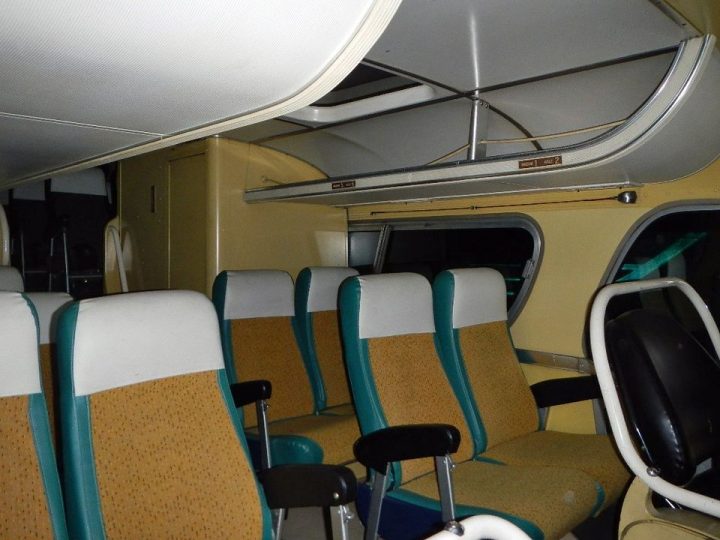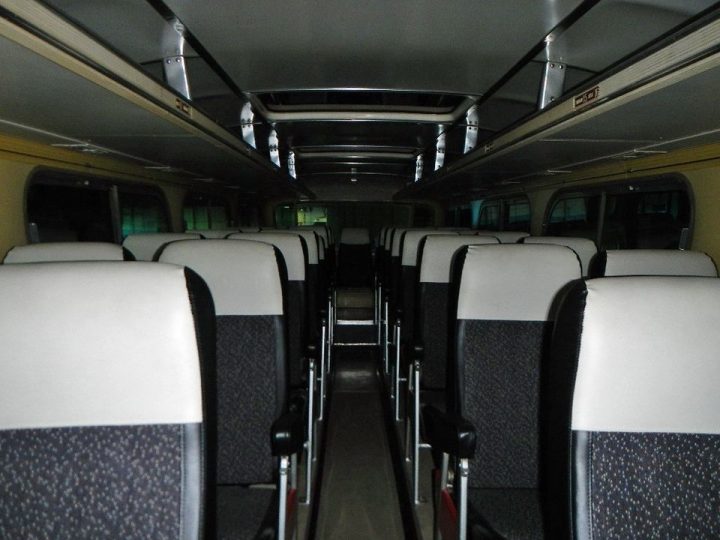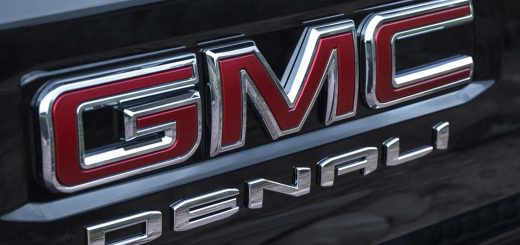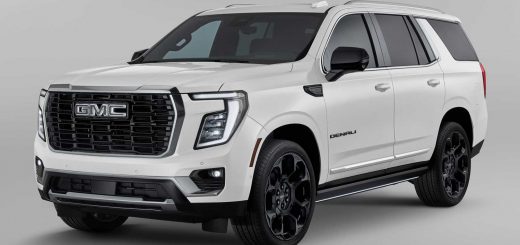It’s not often that we find a GMC model for sale with a price tag of more than a half-million dollars. But this one might be worth it. A 1954 GMC PD-4501 Scenicruiser is for sale in Los Angeles on Facebook Marketplace with an asking price of $650,000.
The GMC Scenicruiser was produced from 1954 to 1956, with an estimated 1,001 examples built. Hemmings estimates that about 220 Scenicruiser models exist today.
The VIN on this one is PD-4501-001, confirming that it was the first Scenicruiser GM ever built, and a “GMC Coaches” placard shown in the photo gallery confirms the “001” VIN. Further, the seller claims to have documentation further confirming its claim as the first one of its kind. All Scenicruiser busses were built exclusively for Greyhound and wear a Greyhound livery like the one you see on this model, which includes Greyhound emblems in lieu of GMC emblems.
One of the GMC Scenicruiser’s most distinguishing features is the two-tier roof. The Scenicruiser seats between 43 and 47 passengers, depending on the configuration, and it’s unclear exactly how many seats this one has. Based on the photos in the listing, the seating appears to be in excellent shape.
The seating areas have overhead storage and a generously sized greenhouse of windows and skylights. The raised rear compartment allows for larger luggage storage areas underneath, making the Scenicruiser more suitable for long-distance bus travel without making the bus longer.
Open the hood on the back of this GM bus, and you’ll find a rebuilt Detroit Diesel 8V-71, a 9.3-liter V8 engine powering only the rear-most axle of the bus, along with a 4-speed transmission. However, these buses were originally equipped with two 4.7-liter 4-71 I4 diesels mated together via a fluid coupling, as well as a 3-speed transmission with a 2-speed auxiliary transmission. The unorthodox Scenicruiser engine tandem was designed so the bus could run on just one of its two engines, and engines could be easily swapped out at service stations when needed.
The Facebook Marketplace listing says this bus was always garaged under cover and was used in the Greyhound Centennial Tour in 2014. The listing also claims that the bus was appraised with a value of $1,000,000, so this rare and collectible bus could actually be a bargain at this asking price.





















Comments
Lovely
Had the pleasure of being the only the passenger on one in 1970. This bus was added when initial bus had full passenger capacity. Had second-level windshield seat. Great experience.
A better value than the Celestiq .
And better looking.
This is an important historic vehicle and would make a wonderful donation to the Pontiac Transportation Museum in Pontiac, MI. The contact there is Terry Connolly (terryconnolly@comcast.net) 248-639-8861. The museum recently opened and has already acquired an outstanding collection of rare vehicles manufactured in Pontiac. Another potential facility is the General Motors Heritage Collection in Sterling Heights, MI.
Heritage museum is moving / has moved to Grand Blanc, Michigan
That GMC placard is not the original. That GMC logo is not from the 50’s. It’s similar to the GM Mark of Excellence logo from the 60’s until a few years ago. I’m not saying that the bus is not the first, but the placard didn’t prove it.
This bus looks like it was the one in the Greyhound historic fleet. They were garaged in the LA maintenance center which was sold and torn down. Almost all of greyhound’s real estate has been sold off.
Agree, the nameplate is a replacement.
GM would never have painted a DD engine red in a factory produced bus. If this truly is the first one it deserves to have the proper twin drive and 4-71 engines and dressed in the proper shade of green.
Additional context:
1. The original twin 4-71 setup wasn’t reliable and Greyhound swapped them out with 8V-71s at the turn of the 1960s. This is the correct engine for this bus.
2. Allegedly, this bus has been owned by Greyhound for all of its life. However, it’s been through at least one restoration, which can explain the non-standard manufacturing plate and engine paint.
I suppose it would depend on what each person accepts as correct. Many people believe restoring historic vehicles to as factory built is proper. Many people believe restoring a historic vehicle to some point in it’s working life, including preserving it’s last as-built configuration is correct. What is the correct thing to do for this bus? What would most of us expect for the first Corvette, GTO, or some other important first GM vehicle? I’m disappointed to see a red 8V-71 where a much more interesting 4-71 twin could be. Doesn’t make it right or wrong. It just makes it less interesting to me.
I grew up behind the Gray Hound bus station. I could see the buses from my bedroom window. It was always a treat when this style of bus showed up. Especially the loud one that billowed black smoke.
Blue Balls🫐🫐🫐🌐🌐🌐🌚🌚🌚😭😭😭
GM built good reliable buses. It is a shame they are no longer being built and a shame so many were torched in Alabama in the 60’s.
I know where one is sitting in Greenback, TN. I got parts for my 1964 GM PD-4106 bus from this collector.